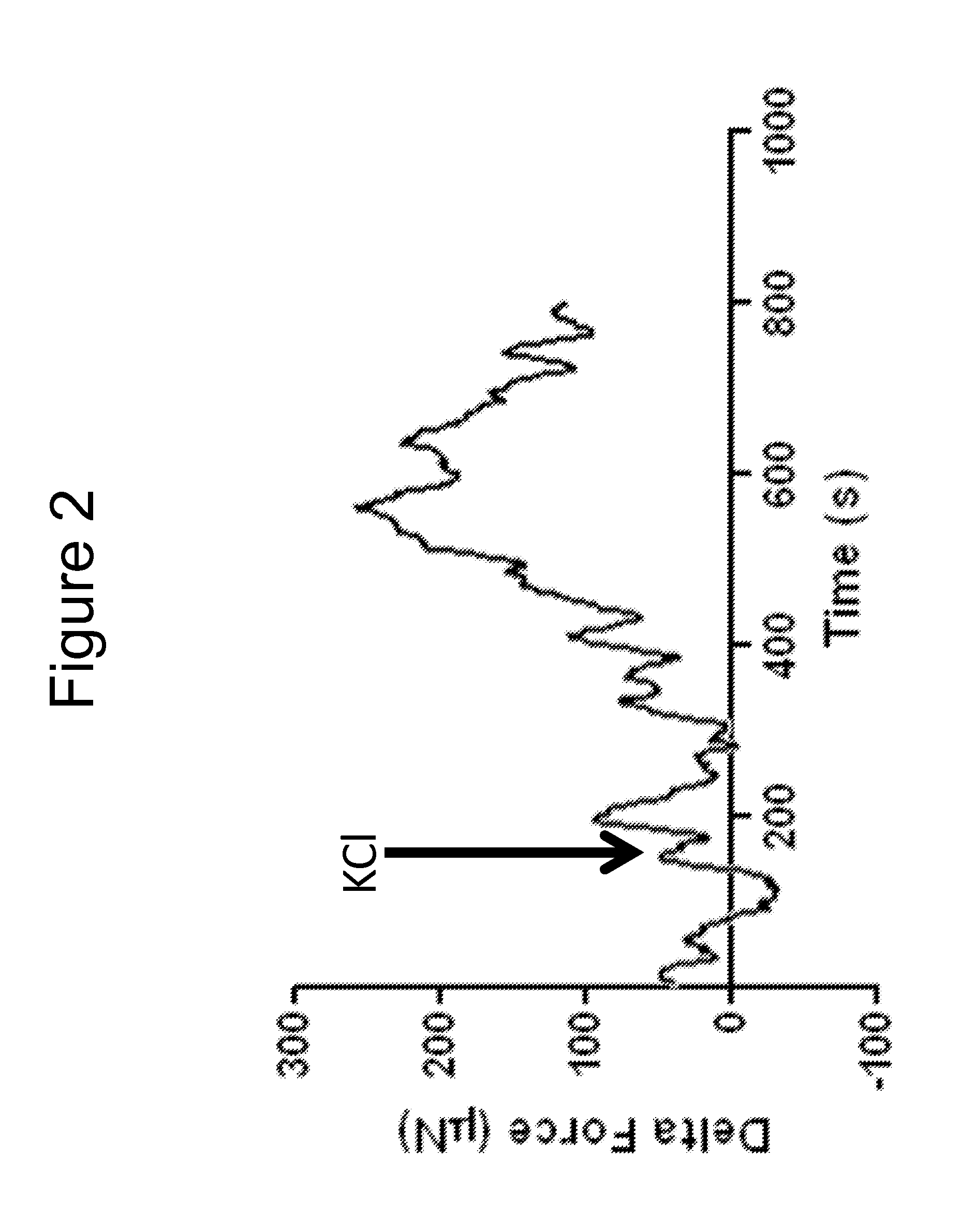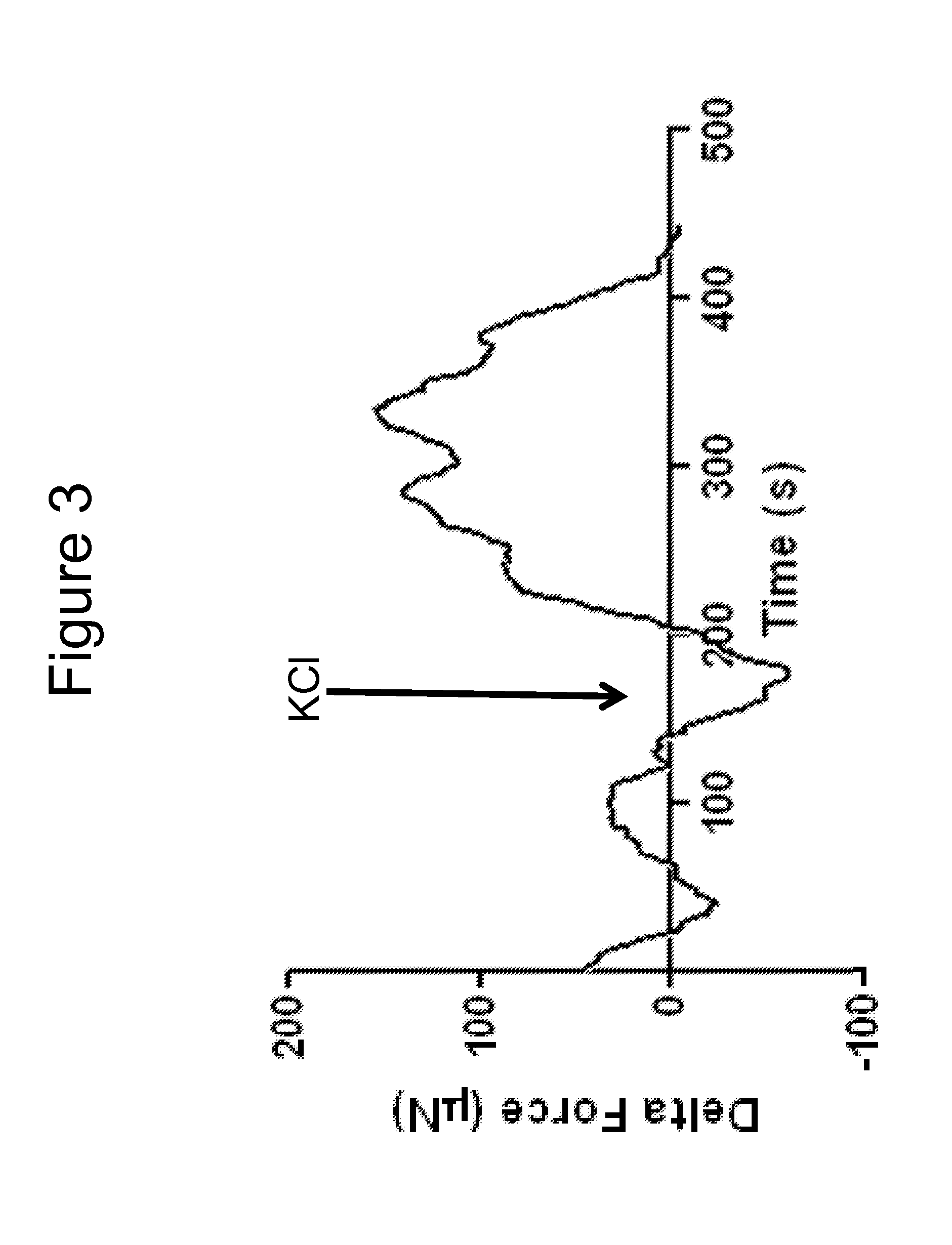Innervation of engineered structures
a tissue engineering and engineered structure technology, applied in the field of tissue engineering, can solve the problems of stratified smooth muscle layer proper orientation regeneration, unable to demonstrate functional motility in prior studies, and difficulty in restoring functional motility,
- Summary
- Abstract
- Description
- Claims
- Application Information
AI Technical Summary
Benefits of technology
Problems solved by technology
Method used
Image
Examples
example 1
[0104]Bioengineered innervated and non-innervated internal anal sphincter (IAS) constructs were made using autologous rabbit IAS smooth muscle and enteric neuronal progenitor cells. After 4 days in culture, the constructs were placed around a biodegradable composite chitosan tubular scaffold. A non-innervated muscle construct (lacking neuronal cells) was placed abutting an innervated construct (smooth muscle cells with neuronal cells) on one side. Another non-innervated muscle construct was placed 1mm away from the innervated construct on the other side. Physiological functionality of the constructs was assessed in vitro.
[0105]Positive NADPH Diaphorase staining of the bioengineered innervated construct demonstrated the presence of nitrergic neurons.
[0106]Microscopic images showed cellular processes bridging the gap between the innervated and the non-innervated construct as early as day 4 after placing the constructs on the scaffold. At day 10, a network of differentiated neurons was...
example 2
[0109]In this example, intrinsically innervated three-dimensional rabbit colon constructs were bioengineered and characterized.
[0110]Smooth muscle cells were trypsinized and neurospheres were accutased. 500 k smooth muscle cells and 200 k enteric neuronal progenitor cells were centrifuged to form a cell pellet.
[0111]The enteric neuronal progenitor cells were resuspended in a 0.4 mg / ml collagen (type I rat tail) and laminin (5 ug / ml) solution. The solution was pipetted onto Sylgard coated 35 mm dishes around a central post. When placed in the 37 C incubator, solution gelled in 15-30 minutes.
[0112]Smooth muscle cell pellet was resuspended in a 0.4 mg / ml collagen solution and pipetted over the first gel layer and returned to the incubator.
[0113]After 2-4 hours, gels were released from the edge of the plate using a sterile 22 g needle.
[0114]1 ml of Neuronal Differentiation Medium (Neurobasal A+B27) was added and the plates were returned to the 37 C / 7% CO2 incubator for differentiation.
[...
PUM
| Property | Measurement | Unit |
|---|---|---|
| Structure | aaaaa | aaaaa |
| Biocompatibility | aaaaa | aaaaa |
Abstract
Description
Claims
Application Information
 Login to View More
Login to View More - R&D
- Intellectual Property
- Life Sciences
- Materials
- Tech Scout
- Unparalleled Data Quality
- Higher Quality Content
- 60% Fewer Hallucinations
Browse by: Latest US Patents, China's latest patents, Technical Efficacy Thesaurus, Application Domain, Technology Topic, Popular Technical Reports.
© 2025 PatSnap. All rights reserved.Legal|Privacy policy|Modern Slavery Act Transparency Statement|Sitemap|About US| Contact US: help@patsnap.com



